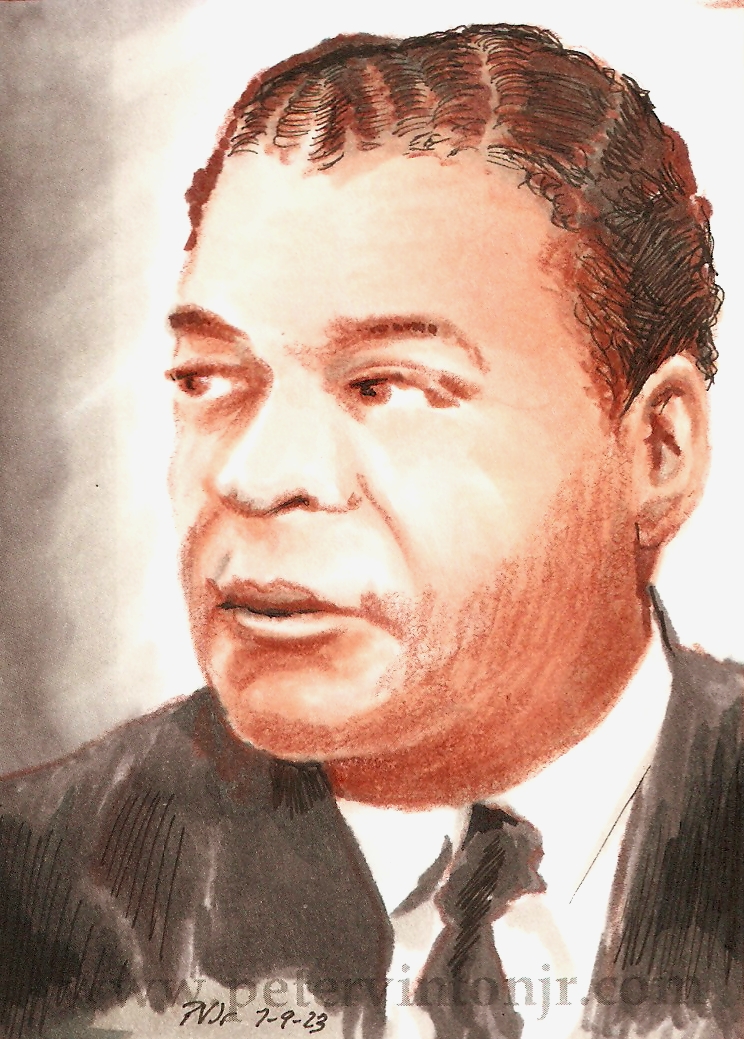
An ongoing illustrative history study
This piece originally posted 7/9/2023
Prelude | 127 | 128 | 129 | 130 | 131 | 132 | 133 | 134 | 135 | Email |
|---|
"The American Negro must remake his past in order to make his future."
This summer, let us browse the stacks of the remarkable life and career of archivist, collector, and curator Arturo Alfonso Schomburg (the "Father Of Black History"), without whom there almost certainly would not have been a Harlem Renaissance. Born in 1874 Puerto Rico to a black mother (from the Virgin Islands) and a Puerto Rican father of German ancestry (hence his distinctive surname), Schomburg recounted a childhood tale of a bigoted grade school teacher in San Juan, who asserted that black people had "no history, art or culture." He moved to New York City in his teens but he never forgot this racist sentiment, and he remained fiercely connected to his Puerto Rican heritage. Activism called to Arturo early; in 1892 he was deeply involved with Las Dos Antillas, an advocacy group that pushed for Puerto Rican independence from Spain --a mission which of course sputtered to a disillusioning end after Spain ceded Puerto Rico to the United States.
Schomburg pivoted to academic life and embarked on a study of the African Dispora. In 1911 he co-founded the Negro Society for Historical Research, a long-term reclamation project in which materials on Africa and its Diaspora were collected. Schomburg would devote the next 20 years of his life to this project --travelling throughout the United States, Europe, and Latin America to rare book stores, antique dealers, and even used furniture stores (one from which he apocryphally claimed to have recovered a handwritten essay by Frederick Douglass). Over time he and his team of African, Caribbean, and African American scholars would amass a collection of over 10,000 books, manuscripts, artwork, photographs, newspapers, periodicals, pamphlets, and even sheet music. One of his proudest finds was a long-forgotten series of poems by Phillis Wheatley.
Of course as any curator will tell you, acquiring unique pieces is nothing without a means to share the knowledge and the history that comes with them --by 1930 (the year of his eventual retirement), Schomberg would have lent numerous items to schools, libraries, and conferences and organized exhibitions. In the midst of all this he wrote articles for a wide range of publications, to include Marcus Garvey's Negro World; the NAACP's The Crisis (edited by W. E. B. Du Bois), and A. Philip Randolph and Chandler Owen's The Messenger; as well as essays for the National Urban League and The Amsterdam News (Harlem's newspaper).
Significantly in 1926 the Carnegie Corporation bought Schomburg's collection for $10,000 (about $125,000 in today's currency), on behalf of The New York Public Library. The collection was added to the Division of Negro Literature, History and Prints of the Harlem Branch on 135th Street, of which Schomburg would later be appointed curator (following a stint as curator of the Negro Collection at Fisk University). The Division became the "go-to" centerpiece of many a Black artist, writer, and scholar; to include Arna Wendell Bontemps and Zora Neale Huston. After his death in 1938, the Division was renamed the Schomburg Collection of Negro Literature, History and Prints. Schomberg's protégé, an up-and-coming author and poet named Langston Hughes, assumed responsibility for the collection.
Today the collection is known as the Schomburg Center for Research in Black Culture (still under the auspices of The New York Public Library) --now topping out at more than 11 million indexed items, and considered to be one of the world's foremost research centers on Africa and the African Diaspora.
Next page - Lesson 132: Isaac Woodard